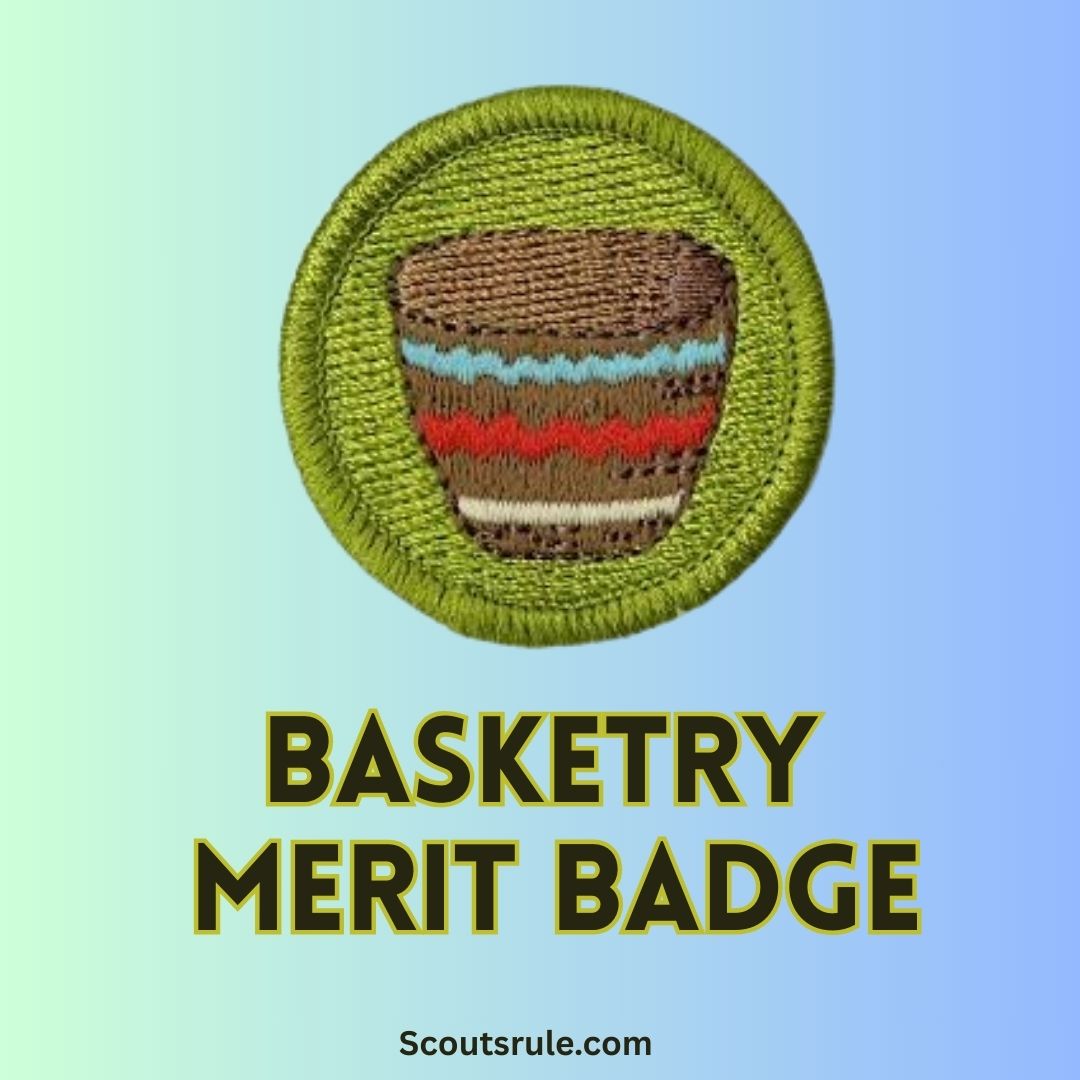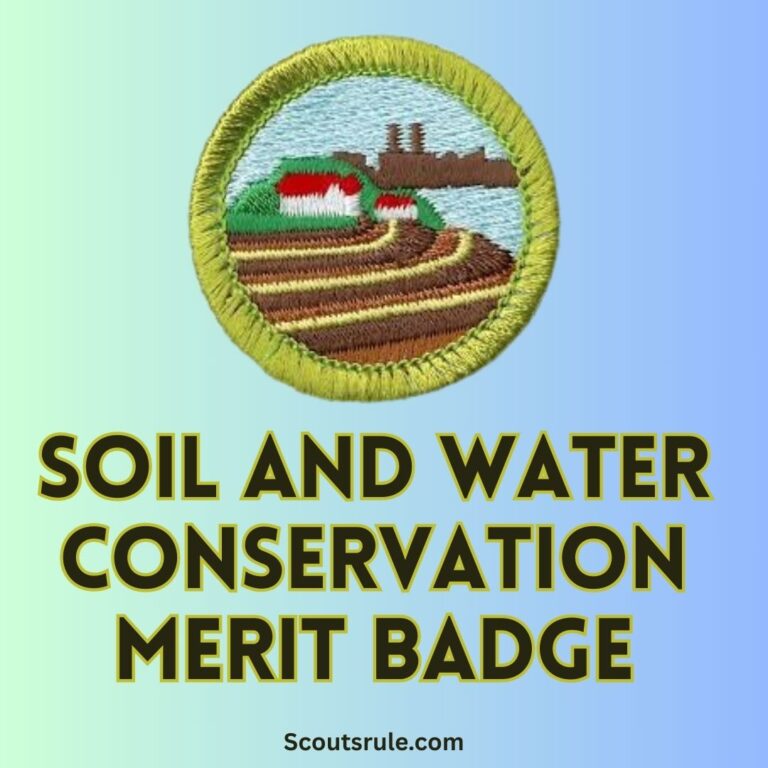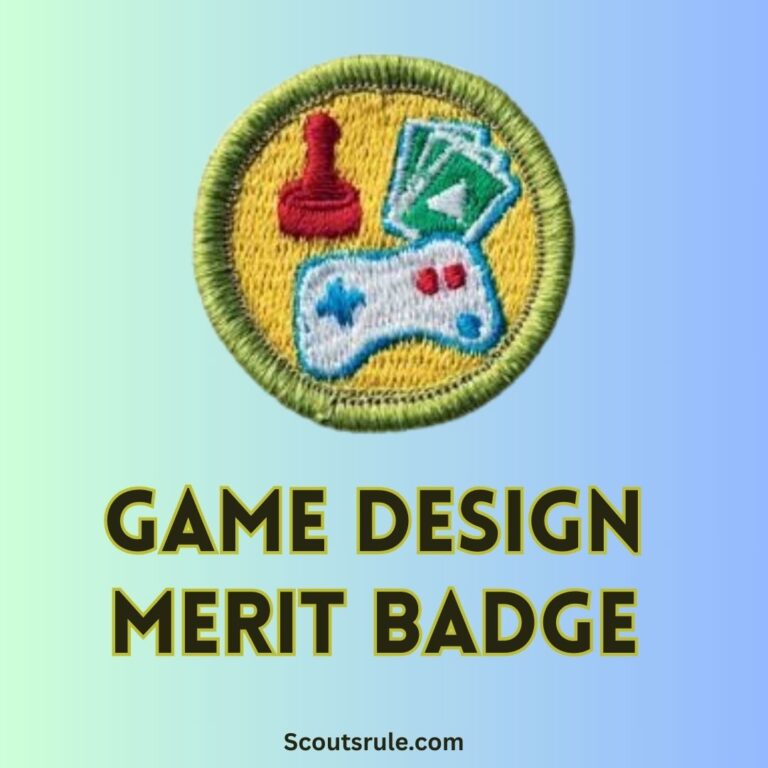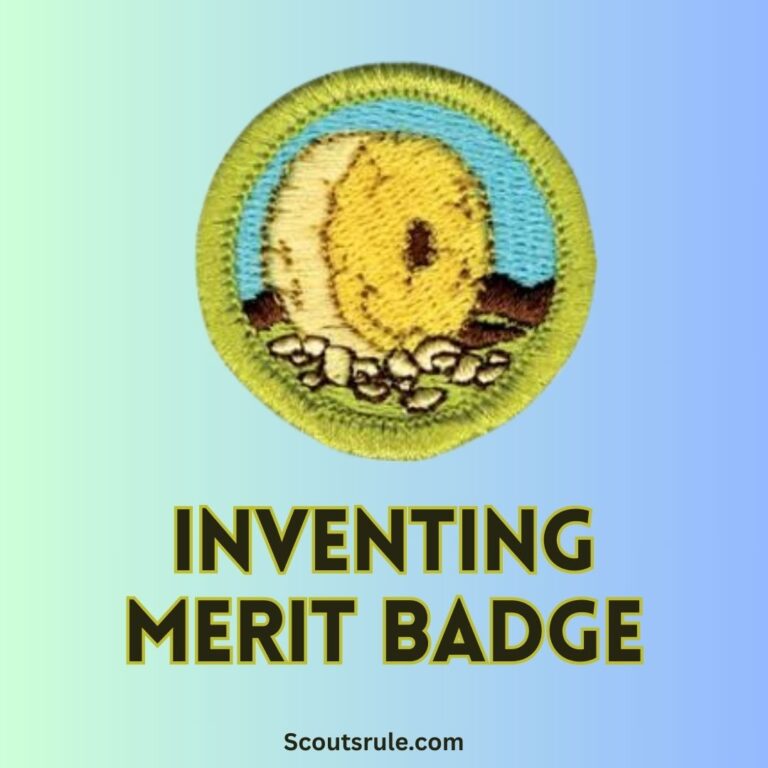
This guide will walk you through every facet of the badge—from understanding safety protocols and key tools to learning various weaving techniques and completing your basket projects. Whether you’re interested in a creative hobby that connects you with an ancient craft or you want to gain practical skills in making functional art, this guide is your roadmap to success.
Post Contents
- Introduction: The World of Basketry
- 2. Cultural Significance and Practical Applications
- 3. Overview of the Basketry Merit Badge Requirements
- 4. Requirement 1: Safety and First-Aid in Basketry
- 5. Requirement 2: Recognizing Basket Types and Weave Techniques
- 6. Requirement 3: Planning and Weaving Projects
- 7. Tools, Materials, and Techniques
- 8. Documenting Your Process: Journals and Portfolio Tips
- 9. Long-Term Benefits and Career Opportunities
- 10. Additional Tips, Resources, and Further Guidance
- Conclusion: Weaving Your Future
Introduction: The World of Basketry
Basketry is one of the oldest crafts known to humanity, with roots deeply embedded in nearly every culture around the globe. From utilitarian containers to intricate artworks, baskets have been used for storage, transport, decoration, and even ceremonial purposes. The Basketry Merit Badge is an opportunity for you to explore this fascinating craft, learn its history and techniques, and create unique, handmade items that you can use or proudly display.
By learning basket weaving, not only do you connect with an ancient form of craftsmanship, but you also develop skills such as patience, hand–eye coordination, and creative problem solving. As you work through each requirement, you will discover how simple materials like natural fibers, reeds, or grasses can be transformed into both functional and beautiful objects through careful design and technique.
2. Cultural Significance and Practical Applications
Basketry is more than just a craft—it is an art form that has played an essential role in the cultural and economic development of communities throughout history. Baskets have been used for:
- Daily Life: For carrying food, water, and goods; storing harvests; and even cooking.
- Art and Expression: Many baskets are highly decorative, reflecting local traditions and aesthetics. They often serve as symbols of cultural identity and heritage.
- Sustainability: Basket weaving uses natural, renewable materials, making it a sustainable practice that supports environmentally friendly art and utility.
- Innovation in Design: Modern basketry often blends traditional techniques with contemporary materials and aesthetics, leading to innovative designs in both art and functional items.
Understanding these broader contexts can deepen your appreciation for the craft and inspire unique approaches to your projects.
3. Overview of the Basketry Merit Badge Requirements
The Basketry Merit Badge is typically broken into three main areas:
- Safety and First-Aid: You are required to explain to your counselor the hazards you might encounter while working with basketry tools and materials, and describe how to prevent and treat injuries such as cuts, scratches, and scrapes.
- Identification and Weave Techniques: You must show that you can identify various types of baskets—including plaited, coiled, ribbed, and wicker baskets—and describe at least three different weaving techniques.
- Project Weaving: You will plan and weave three projects:
- A square basket
- A round basket
- A campstool seat
In addition, you will be expected to document your process, reflect on your progress, and discuss any creative and practical challenges encountered along the way.
4. Requirement 1: Safety and First-Aid in Basketry
Working with basketry tools and materials—whether you are cutting reeds or weaving fibers—requires attention to safety. This section is designed to help you understand potential hazards and the precautions you need to take.
4.1 Identifying Hazards
While basketry is generally safe, there are several hazards to be aware of:
- Cutting Tools: Tools such as knives, scissors, or awls used for trimming fibers are sharp and can cause cuts. Even a small mistake might lead to a serious injury if proper care is not taken.
- Splinters: Natural materials like reeds, grasses, or bark may splinter during weaving, potentially causing minor wounds or irritation.
- Dust and Debris: Some basketry materials can produce fine dust or particles when handled (especially when working with dried fibers). This may irritate the eyes or respiratory tract.
- Repetitive Motion: Long sessions of fine motor work can lead to repetitive strain injuries or muscle fatigue.
4.2 Preventive Measures and First-Aid Procedures
To mitigate these hazards, you should follow these guidelines:
- Use Tools Correctly: Always use cutting tools safely. Ensure that blades are sharp—dull tools require more force and increase the likelihood of slipping.
- Wear Protective Gear: When necessary, wear gloves. It might also be beneficial to wear safety glasses if you’re working in an area where splinters might fly.
- Work in a Well-Lit, Organized Area: A clean and well-organized work area helps prevent accidents. Keep your materials in order so you can quickly locate what you need and reduce the chance of tripping or mishandling tools.
- First-Aid Procedures:
- Cuts and Scrapes: If you sustain a cut or scratch, immediately wash the wound with soap and warm water, then apply an antiseptic. Cover it with a sterile bandage.
- Splinters: Remove any splinters carefully with clean tweezers and apply a disinfectant.
- Repetitive Strain: Take regular breaks during long sessions of weaving. Stretch your hands and arms to relieve any tension.
Discuss and, if possible, practice these safety measures with your merit badge counselor, ensuring you understand when and how to apply first-aid treatment.
5. Requirement 2: Recognizing Basket Types and Weave Techniques
This component focuses on building foundational knowledge of the variety of baskets and the techniques used to weave them.
5.1 Types of Baskets
You must show that you can identify each of the following types of baskets:
- Plaited Baskets: These are made by weaving flat materials over and under one another in a crisscross pattern. Plaiting is often used to create strong, durable baskets.
- Coiled Baskets: Coiled baskets are constructed by stitching or spiraling long strips of material around a core, typically yielding a rounded shape with a distinctive layered structure.
- Ribbed Baskets: Characterized by parallel ribs or strips that create patterns or add texture, ribbed baskets often combine elements of plaiting with structural reinforcement.
- Wicker Baskets: Typically made from willow or similar pliable woods, wicker baskets involve bending and weaving natural branches together. They are known for their rustic, natural appearance.
5.2 Overview of Weave Patterns
In addition to identifying basket types, you need to describe at least three different weaving techniques. Consider the following examples:
- Simple Over-Under Weave (Plaiting): This basic technique involves interlacing strips in an alternating pattern. It creates a uniform texture and is fundamental to many basketry projects.
- Coiling Technique: In coiled weaving, fibers or strips (often of fabric or natural material) are wound around a central core. The coil is typically stitched as it accumulates, forming a basket that is both flexible and sturdy.
- Twining: Twining involves intertwining two or more strands around vertical supports to create a tight structure. This technique is commonly used in creating baskets with strong, raised patterns along the sides.
Describe each of these techniques in your own words and, if possible, illustrate with diagrams or small sample pieces. Discuss their strengths, weaknesses, and applications in basket making.
6. Requirement 3: Planning and Weaving Projects
The heart of the Basketry Merit Badge is the practical application of your basket weaving knowledge. You will plan and weave three distinct projects: a square basket, a round basket, and a campstool seat. Each project challenges you to apply different weaving techniques and to creatively use materials.
6.1 Project A: Weaving a Square Basket
Objective: Create a square basket using the skills and techniques you have learned.
Steps to Consider:
- Design and Layout:
- Sketch your design.
- Determine the dimensions of your basket.
- Choose your materials—for example, natural reeds, grasses, or synthetic fibers.
- Preparing Materials:
- Harvest or prepare your fibers.
- Soak them if necessary so they are pliable.
- Weaving Process:
- Start by creating the base.
- Weave the sides carefully, ensuring the basket maintains a square shape.
- Finish by forming a secure rim or handle, if required.
- Finishing Touches:
- Trim excess material neatly.
- Sand or smooth any rough edges.
Document each step in your journal with photographs, sketches, and notes on what worked well and any challenges encountered.
6.2 Project B: Weaving a Round Basket
Objective: Craft a round basket using techniques suited for curvier, circular forms.
Steps to Consider:
- Design and Planning:
- Sketch your round basket and note the desired diameter and depth.
- Identify if you will modify the coiling technique or use a combination of plaiting and coiling.
- Material Preparation:
- Prepare your chosen material in lengths suitable for creating a circular pattern.
- Weaving Process:
- Begin at the center and work outward in a spiral, building up layers.
- Ensure that each loop is tight and uniform; this is key for maintaining shape and structural integrity.
- Edge Treatment:
- Finish the basket with a decorative or functional rim, ensuring it is secure and consistent with the round shape.
Again, document your design process, changes made during weaving, and any techniques that proved particularly effective.
6.3 Project C: Weaving a Campstool Seat
Objective: Weave a campstool seat, combining functional design with aesthetic appeal.
Steps to Consider:
- Design Considerations:
- Determine the desired size and shape of the campstool seat, keeping in mind the ergonomics and intended use.
- Choose a durable material that can withstand regular use and outdoor elements.
- Structural Integrity:
- This project may require a frame or a supportive core; decide whether you will weave directly onto a pre-made structure or create the support as part of the weaving process.
- Weaving Techniques:
- Apply appropriate weaving techniques to create a surface that is comfortable yet strong enough to support weight.
- Consider using a combination of weave patterns to both reinforce the structure and add visual interest.
- Finishing the Project:
- Ensure all loose ends are secured.
- Add any additional supports or embellishments as needed to provide both stability and a finished aesthetic.
Like the previous projects, record every stage of the process. Reflect on what design choices influenced the performance of your campstool seat and how the project challenged you relative to the other basket forms.
7. Tools, Materials, and Techniques
Tools
- Cutting Tools: Use sharp scissors, knives, or specialized basketry tools (such as awls) to cut fibers cleanly.
- Measuring and Marking Tools: Rulers and markers help you measure lengths accurately and mark work areas on larger pieces.
- Weaving Supports: Small frames or hoops may be used to help shape your basket as you weave.
- Sanding Tools: Fine-grit sandpaper may be needed to smooth rough edges and ensure a neat finish.
Materials
- Fibers: Natural materials such as rattan, willow, reed, bamboo, or synthetic fibers. Choose materials based on the project requirements and desired aesthetics.
- Binding Materials: String, twine, or thin strips to secure coils or join weaving segments.
- Finishing Materials: Sealants, varnishes, or paints may be used for decorative finishes and to preserve the basket, especially if it’s intended for outdoor use.
Techniques
Experiment with techniques such as:
- Soaking and Conditioning: Properly soaked fibers are more pliable and easier to weave.
- Consistent Tension: Maintaining even tension on your weaving contributes significantly to the finished basket’s uniformity and strength.
- Pattern Repetition: Repeated, consistent patterns create a visually pleasing design and ensure that sections of your basket do not become structurally weak.
- Edge Finishing: Techniques for edging (thatching off loose ends or carefully folding over edges) define the final appearance of your basket.
Developing proficiency with these tools and techniques will not only help you complete the required projects but also lay the groundwork for any future creative endeavors in craft or design.
8. Documenting Your Process: Journals and Portfolio Tips
Keeping detailed records is crucial for almost every merit badge, and the Basketry Merit Badge is no exception.
- Create an Inventor’s (Weaver’s) Journal: Record your plans, sketches, progress photos, adjustments, and personal reflections. This journal provides evidence of your creative process and demonstrates thoughtful analysis of your work.
- Include Drawings and Diagrams: Sketch each step of your basket designs. Diagrams can illustrate the weave patterns and structural reinforcements you applied.
- Take Photographs: Photograph key stages from initial planning through final product. These images help document progress and can be used as part of your final portfolio.
- Reflect: Write about challenges you encountered, surprises during production, and what you learned from each basket project. Reflection deepens your understanding and shows how you have grown in both skill and creativity.
9. Long-Term Benefits and Career Opportunities
Learning basketry offers lifelong benefits beyond simply earning a merit badge.
Personal Benefits
- Enhanced Creativity: Basket weaving encourages you to think creatively about materials, patterns, and problem solving. It teaches patience and persistence.
- Practical Skills: You pick up fine motor skills, attention to detail, and the knowledge of working with renewable natural materials.
- Stress Relief: The rhythmic, tactile process of basket weaving can be a calming and meditative activity, providing a creative outlet to relieve stress.
Career and Educational Opportunities
While basketry might start as a hobby, the skills learned can feed into various future endeavors:
- Art and Design: Basket weaving skills are valuable in arts, crafts, and design industries. Many artisans create baskets for sale or collaborative projects.
- Sustainable Craftsmanship: With an increasing focus on sustainability and renewable resources, traditional basketry skills are appreciated in eco-friendly design and craft fairs.
- Heritage and Cultural Preservation: Some careers, especially in museums or cultural centers, focus on preserving traditional crafts and educating others on heritage arts.
- Entrepreneurship: Basket makers may choose to start their own businesses, selling unique handcrafted items locally or online. Understanding materials and market needs is an essential business skill.
Your exploration of these topics through research, interviews, and personal reflection can reveal pathways that may inspire you to pursue further studies or careers in art, design, or cultural preservation.
10. Additional Tips, Resources, and Further Guidance
Practical Tips
- Experiment with Different Materials: Don’t be afraid to try various natural and synthetic fibers. Experimenting with different textures and colors can lead to unique artistic expressions.
- Practice Consistently: Mastering any craft takes time. Regular practice sessions help build muscle memory and improve your ability to control the materials.
- Seek Mentorship: Ask local artisans, museum curators, or experienced basket makers for advice. Many communities have craft centers or workshops where you can learn from experts.
- Join a Community: Engage with scouting groups or local craft clubs that focus on traditional artisanal skills. Sharing ideas and techniques with peers can be highly inspiring.
Resources
- Online Guides and Videos: Websites like Scoutles.com and ScouterMom.com offer detailed guides and video tutorials specifically for the Basketry Merit Badge.
- Library Books and Magazines: Visit your local library for books on traditional crafts, basket weaving history, and modern techniques.
- Workshops and Local Classes: Many community centers or art schools offer classes on basketry. Participating in these classes not only hones your skills but also exposes you to contemporary trends in the craft.
- Cultural Organizations: Some cultural and heritage organizations specialize in traditional basket making and may offer demonstrations, resources, or even mentorship opportunities.
Conclusion: Weaving Your Future
The Basketry Merit Badge is more than just a series of projects and written reports—it is a journey into an ancient craft that connects you to generations of artisans. As you learn the safety protocols, master various weaving techniques, and create tangible projects like the square basket, round basket, and campstool seat, you not only earn a merit badge but also acquire skills that will last a lifetime.
Through basketry, you learn patience, creativity, and the value of attention to detail. You discover how natural materials can be transformed into beautiful and functional art forms. Moreover, the process of planning, experimenting, and reflecting on your work teaches you problem-solving skills and the importance of perseverance.
Whether you choose to continue refining your basket weaving techniques as a hobby, pursue further studies in arts and design, or even consider a career in cultural or sustainable craftsmanship, the lessons learned in basketry will provide a foundation for lifelong creativity and skill. Embrace the challenges, enjoy every moment of experimentation, and be proud of each piece you create.
May your journey through the Basketry Merit Badge not only enrich your Scouting experience but also inspire a deeper connection to traditional crafts, cultural heritage, and your own creative potential.
Happy weaving, and may your creative journey continue to flourish with every strand of fiber you interlace!

Hi, Robin here, A former lead Scout and here I share my inspiring stories about USA Scouts, leadership, adventure, how to guides and more.






